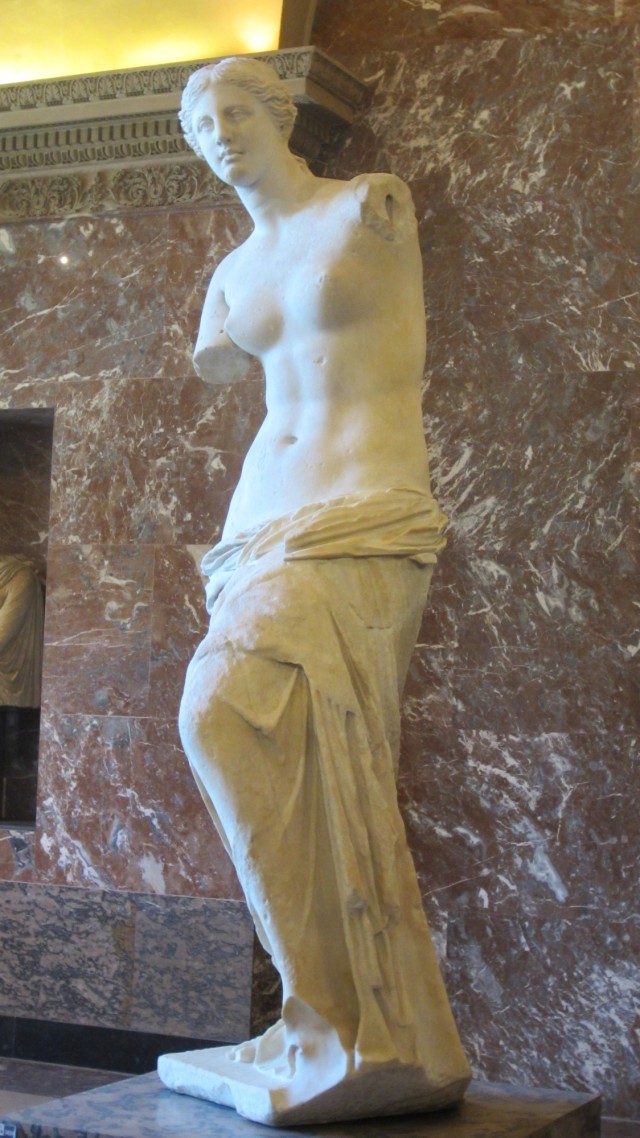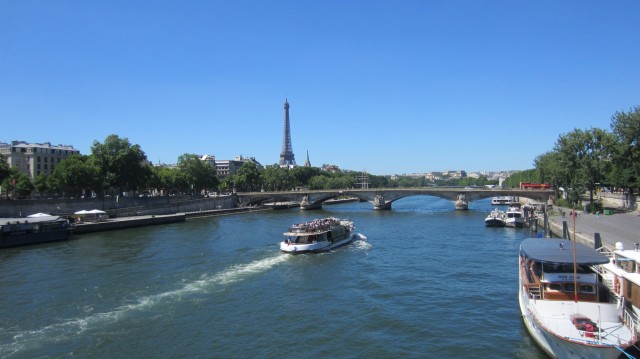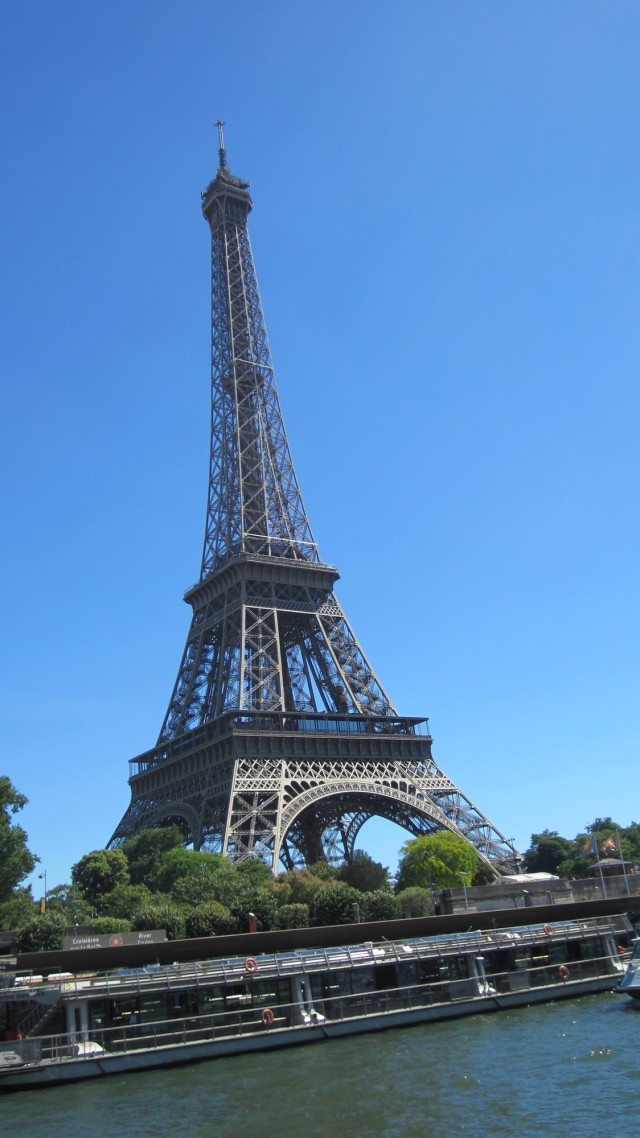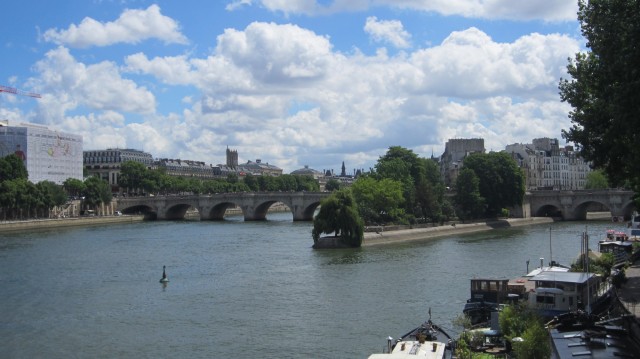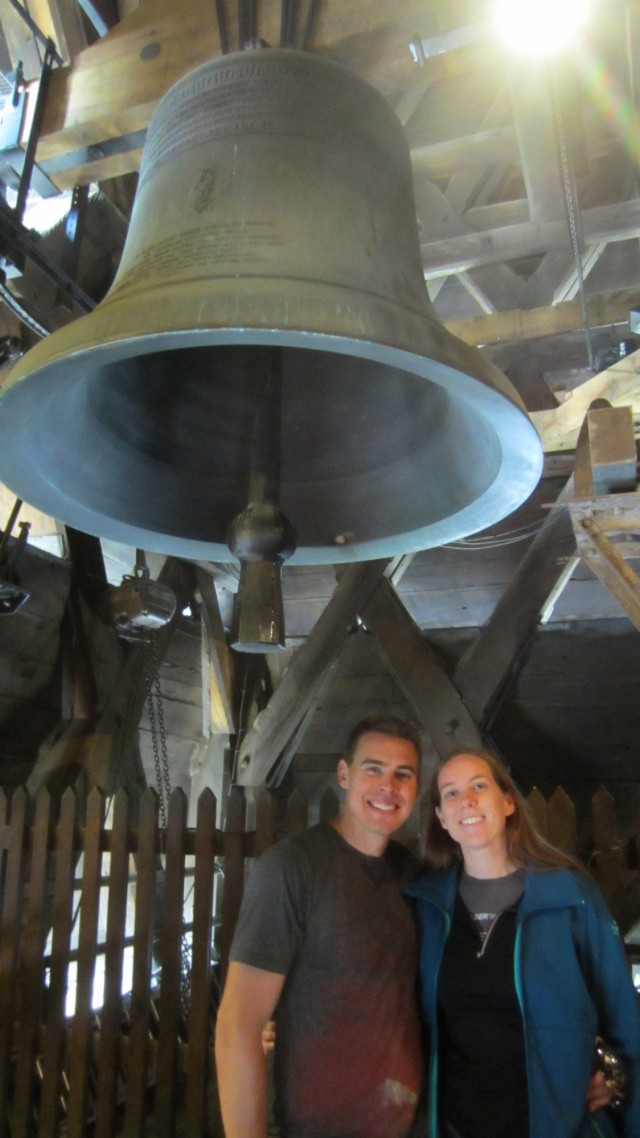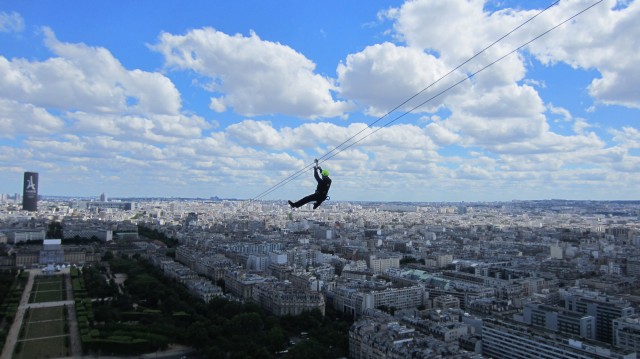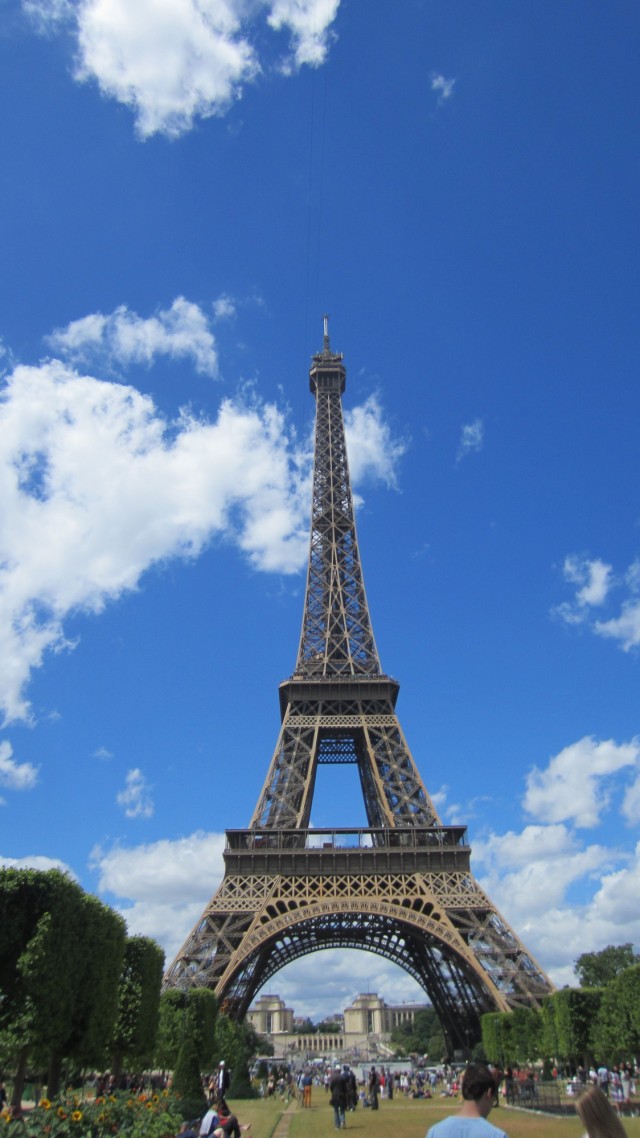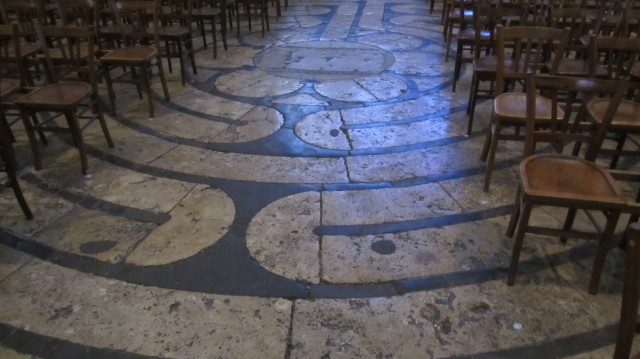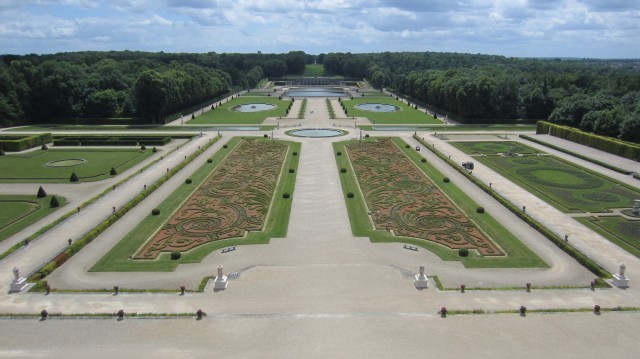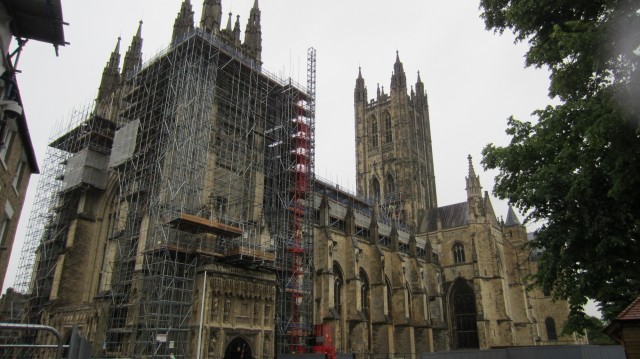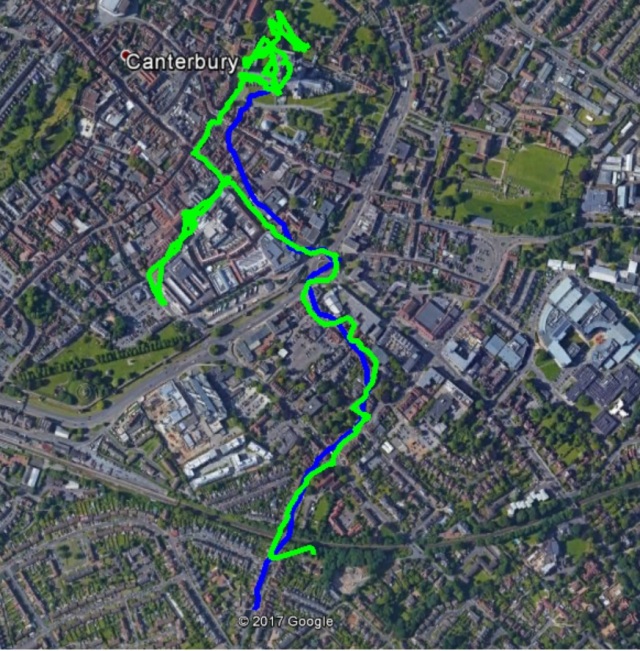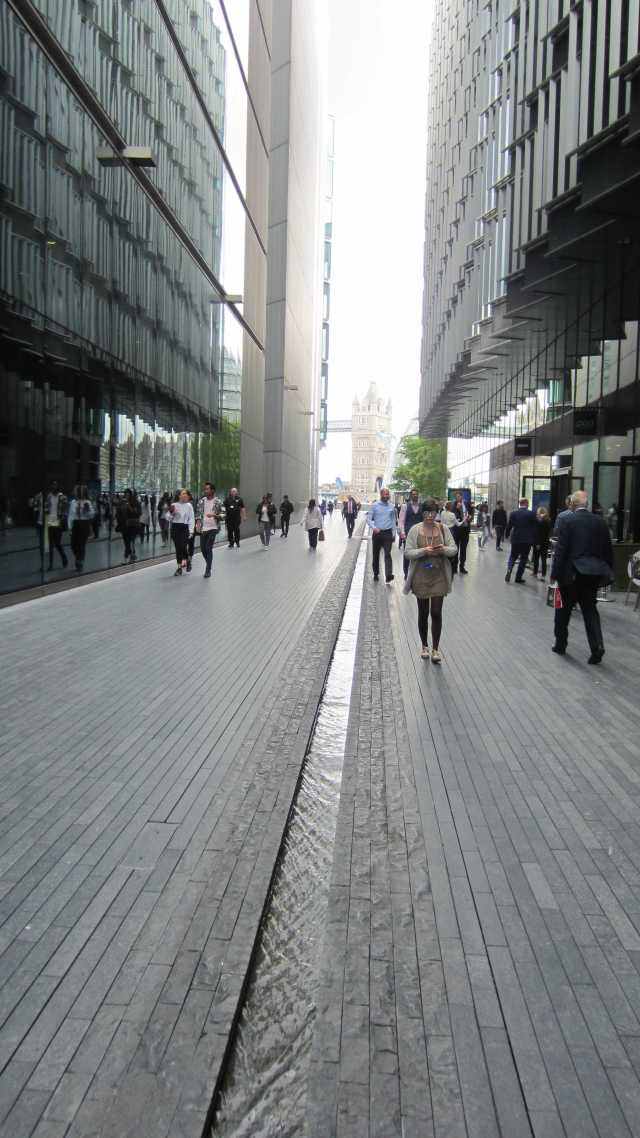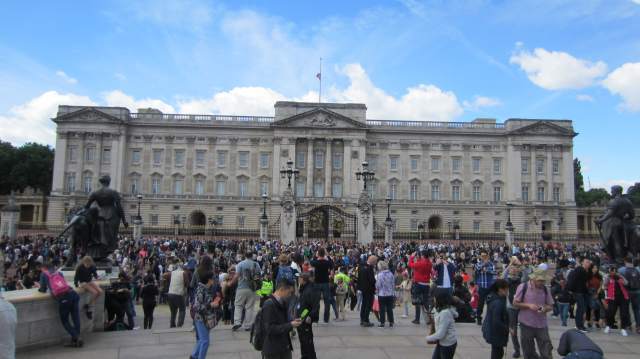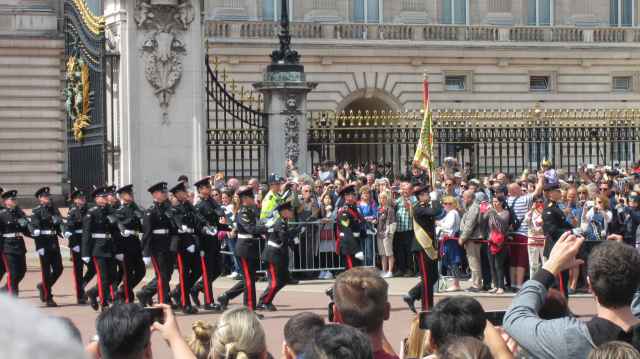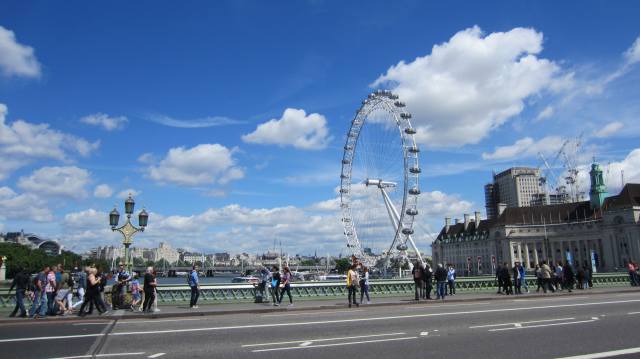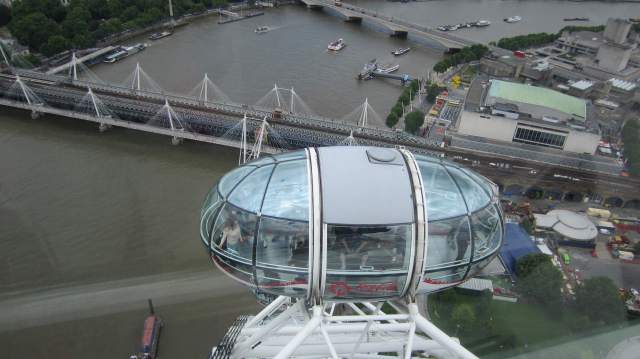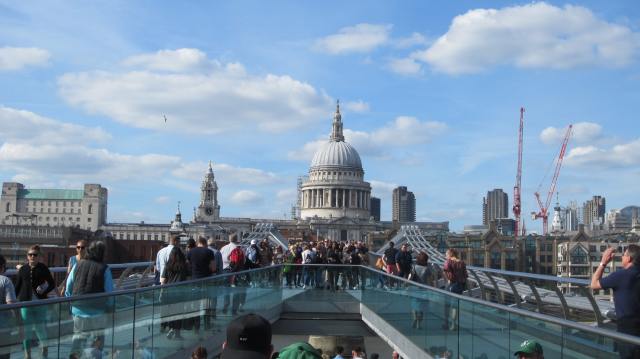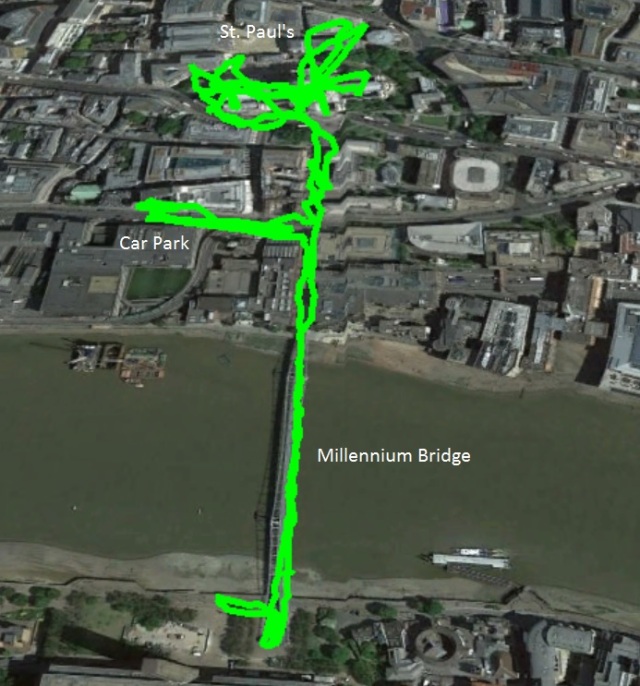*** Check out the first post of our trip to England/France and read them in order! ***
As planned, we were thankfully able to sleep in some and recover from our late night. We had to be out of the flat by 11am but that left us a bit of time to go back to our favorite pastry shop once more as well as stop by the grocery store to pick up some snacks. After a very slow process of extracting our car from its berth in the underground parking garage, we deposited our key in the dropbox and set off north out of town for the hour journey to Beauvais.

Driving from Paris to Beauvais.
We chose to stop in Beauvais because its cathedral contains a one-of-a-kind astronomical clock built in the 1860s. We did not anticipate the cathedral itself being so interesting, and were pleasantly surprised when we pulled up and saw this massive, if not oddly misshapen building in front of us. The cathedral at Beauvais is incredibly tall, a feature which is exaggerated even more because the nave was never constructed. As such, the building does not have the long horizontal span that normally balances out the visual impact of the height.

The unfinished Beauvais Cathedral. The plans for adding a long nave to the building never came to fruition.
The highlight inside the museum was of course the clock. We bought tickets from the lady inside and she informed us that the clock presentation would start on the half hour and that are audio guides would automatically play. We sat down in some wooden chairs in front of the clock and waited, along with one other couple (not too crowded on a Sunday afternoon).

The transept and apse of Beauvais Cathedral.
After much anticipation, the presentation began with a video playing on some TV screen and spotlights accenting different parts of the clock as the audio guide explained what we were seeing. The audio was ridonculously cheesy and was staged as a mock conversation between the clock builder and an inquisitive female who was also already inexplicably knowledgeable about the clock. As such, most of her questions were incredibly leading where she essentially told the clock maker how the clock worked and he got to say simply, “Exactly correct!” and other such phrases.

The vaulted ceiling of the Beauvais Cathedral feels astonishingly high from the inside. It may be the tallest in the world at 48 meters high and the visual effect is magnified more by the lack of a nave to give length to balance out the height.
Looking past the cheesiness, the audio guide did give a lot of interesting information about the design of the clock and the motivation behind its construction. During the 30 minute presentation, we got to see the clock first chime at the three quarter hour and then also on the hour. Animated figures move around, fire appears and disappears, angels blow trumpets, and myriad other actions occur. All of this happens completely mechanically based on an insanely complex system of gears. 50 or so dials report all manner of temporal information from local time in various major cities to the lunar cycle to the tides to solar eclipses. Again, all of these calculations are implemented strictly through the use of gears! It is even capable of correctly managing leap years, including not assigning a leap year when the year ends in 00 but is not multiple of four (e.g., 1900 is not but 2000 is). This means there is a gear involved in this clock that only revolves fully once every 400 years and which has only revolved about halfway around since the clock was built!

The incredible clock in the Beauvais Cathedral. It is made of 90,000 individual pieces and uses an entirely mechanical system to control more than 50 dials as well as numerous moving figurines.
Unfortunately, there is no access to the back of the clock so we could not see firsthand very much of the complex innards, but even just walking around the outside was really cool. It was definitely worth the stop to see this thing and we highly recommend it for anyone who is fascinated by ancient technological marvels. This is quite possibly the most complex mechanical machine every constructed and it consists of approximately 90,000 individual pieces.
Still amazed, we eventually left the cathedral and sought out a restroom before leaving town. Next to the cathedral, we saw a free museum which had toilette signs visible from the main entrance. So, we sauntered in hoping to just use the restroom and quickly leave. Before we could do that, though, we were greeted and handed a brochure in English explaining the exhibits.
Not wanting to seem rude, we did a quick lap around the lower floor of the museum, which contained numerous paintings from Italian painters. After finally reaching the restroom, we then checked out the upper floor where we found some modern art displays that were well beyond our ability to comprehend. After what we hoped was an appropriate amount of time in the museum, we exited past the group of four or so workers and back to our car.

The view as we drove north from Beauvais to Amiens.
Our journey took us next to Amiens (pronounced “ammm-e-yawn”), which is where we would stay for our final night in France. We found street parking right in front of our hotel, but then noticed a sign on the door saying it was closed for check-in until 5pm (despite our booking confirmation saying we could check in any time between noon and 8pm). The door opened when we pushed on it and we wandered inside but couldn’t find anyone to help us at the moment.

The very Gothic facade of the Cathedral in Amiens…like almost every other large church in France, this one is named Notre Dame, which means “our Lady”.

Like many Gothic cathedrals, Amiens features large quantities of intricate statues on its facade.
We returned to the car, grabbed our day pack, and set out on foot across Amiens figuring we would just check in later that night. After a few minutes of walking, we arrived at the town’s massive cathedral and stepped inside. We quickly realized that the towers could be climbed and, being us, we had no choice but to do so. The ticket office was outside and we purchased tickets for a tower tour beginning in just a few minutes.

Our trip up the towers of Amiens Cathedral gave us an up close view of the beautiful rose window on its facade.
The “tour”, in this case, consisted of nothing more than a timed opening of the doorway to allows up the stairs. Other than that, we were able to explore the towers entirely on our own (well, along with the other 6 people who also climbed up there at the same time). As expected, we were met with lovely views over Amiens and we were astounded at the number of churches we could see in every direction.

Looking back at the steep lead roofs and central spire from atop the bell towers at the cathedral in Amiens.
The inside of the cathedral was much like many of the other Gothic cathedrals we have visited. Like the cathedral in Chartres, this one also features a labyrinth on the floor of the nave as the final challenge for pilgrims before approaching the altar. One highlight of the cathedral for us was the large arches separating some of the chapels from the transept. Elsewhere, these same arches hold the stained glass windows that line the exterior. With no glass in these inside ones, we were able to see how relatively thin the stone is and it all seems very delicate. It’s hard to believe it is strong enough to last over time, but hasn’t had issues yet at least.

The stone arches and circular window in the Amiens Cathedral seem so delicate when they don’t have a window pane set inside.

Beautiful stained glass at the Amiens Cathedral.
We were unable to visit the treasury of the church since we arrived after the single Sunday tour. As such, we missed out on seeing the skull of John the Baptist, which is the cathedral’s most famous relic. We did see a reliquary box in the cathedral that contained the tiniest of fragments of bone, which supposedly came from the skull, but it would have been cool (and probably creepy) to see the whole thing.

The quire and altar of the Amiens Cathedral
Once we had finished in the cathedral, we walked across the square to a tourist info office to use the restroom (yes, we are doing our best to stay better hydrated than we did in Paris) and to get a map of Amiens since we didn’t know where to go next. The clerk was very helpful and gave us some suggestions about where we could find food and what else might be worth doing for our evening in Amiens. We also learned that the cathedral would be lit up at night, like many others around France…but that it wouldn’t begin until Thursday and thus wouldn’t be an option for us.
We followed our map down the hill from the cathedral and into an area of former marshland that now serves as a very unique botanical garden. We had originally thought to just walk around, but we decided to check in on how much a boat tour would cost. It turns out a boat tour is actually very inexpensive in Amiens (6 euros each for a 45 minute trip) and we happily signed up to do it.

Riding our small boat around the marshy canals and gardens of Amiens.
After a few minutes wait, we piled into the back bench of a 12-person punt boat (though also with electric motor) and set off around a beautiful network of canals with our guide narrating along the way. Our guide was awesome and was able to answer all of our questions in English and gave us the translated commentary as well. He was from Amiens but his heritage came from further north in France and we could definitely detect a thicker and different accent than we had heard to date.

The gardens in Amiens are quite lovely and many are only accessible by boat.
The network of canals gives access to a large area of unique gardens. Individual owners maintain each plot, some growing vegetable gardens whilst others have beautiful flowers and whimsical garden art. We floated along in a peaceful bliss, especially thankful that the sun had ducked behind the clouds. Our guide explained that the network of canals goes on for miles and miles and are a mixture of both public and private waterways. Anyone can use the public ones, though the opportunities to get lost are quite numerous.

One of the pieces of modern art we saw on our boat ride. These are temporary as part of a Modern Art Expo in town.
In a few spots, we saw large modern art structures, which the guide explained were part of an upcoming expo in town. At various points we also saw numerous dogs (including one riding in a boat), multiple types of ducks, and one very excited young kid (perhaps 8 years old) who ran to the edge of his garden to wave at us and then proceeded to do “the dab” about 10 times in a row with a huge smile on his face.

Each garden was unique, though almost all of them featured colorful flowers.
After an amazing 45 minutes, we docked again and thanked our guide for a lovely time. We then walked around the oldest section of town, which is built around another set of canals and is quite quaint. Hunger was setting in, so we returned to a riverfront area we had seen earlier that had a bunch of restaurants. We walked up and down the row of restaurants, looking at each menu of the day and trying to decide what would be best for the night. At many of the restaurants, a good number of people were sitting out on the patios drinking cocktails in the early evening breeze.

The quaint and quiet streets of historic Amiens.
Philip (because Rose had absconded decision authority on this one) finally decided on a restaurant and we inquired about a table. At this point we were informed by the British lady running the place that they did not open for food service until 7pm (still an hour away!). It was at this point that we realized the significance of the fact that nobody was actually eating food and instead only drinking.
Disheartened, we headed back to the hotel to check in with the intention of just grabbing something quick for dinner. We had hoped to have an early night since we had an early morning to come in order to catch our ride on the Channel Tunnel. When we returned to the hotel, we found it open and were able to check in for our stay. We also discovered that the hotel had no lift and our room was up two and a half flights of stairs. Through great strength and mental fortitude, Philip got the suitcases to the room and we settled in for a few minutes to relax.

Our boat guide told us that this building was Europe’s first skyscraper. Some internet searching contradicts this slightly (a building in Antwerp, Belgium seems to hold the title of first “skyscraper”) but it is definitely regarded as one of Europe’s first “tall buildings”.
After some deliberation, we decided that we did desire one more sit down meal in France and so snacked a bit to tide us over. Just after 7pm, we went back down to the river front and back to our chosen restaurant. We took a table alongside the river and settled in for what was hopefully to be another amazing meal.

The River Somme running through Amiens. We ate dinner at one of the restaurants along the river bank.
While we sat there, we became aware of numerous ducks on the river. We first saw a mommy and daddy duck with four ducklings of adolescent age. These were pretty cute, but had almost reached the point of self-sufficiency and thus had no issue venturing far from mom in search of food in the reeds. Soon after, however, we saw another duck family with four of the tiniest little fluff balls. Being so young, these ducklings were much less confident being away from mom and anytime they discovered they had ventured more than a few feet from her side, they would scurry back to mom as quickly as possible. They were so light that it looked like they ran across the surface of the water to get back to her and it was one of the most adorable things we’ve ever seen. We also had some nice memories of a dinner in Milano eight years ago when we had also sat by a river and watched the duckies.

We spent a good portion of our dinner watching this adorable duck family swim up and down the river. In unrelated news, Rose had duck for dinner…
There was an Italian restaurant next door to ours and, at one point, an elderly lady wearing slippers appeared in the alleyway between the two buildings and just stood there watching things for a long while. We aren’t sure exactly who she was or why she had no real shoes on her feet, but we joked that perhaps she was owner of the Italian place and was lamenting the lack of patronage at her restaurant at the moment. We also joked that perhaps the reason the restaurant had low patronage was because of the odd lady in slippers staring from the alleyway.
We had multiple waiters throughout the meal and they each worked with us in English as much as possible. Dinner was a slow affair and was definitely tasty, but also definitely not even close to what we had in Chartres. While all of the food was very good, it did not have near the complexity or mastery we had experienced before.
For the entrée (appetizer), Rose had a prosciutto and cheese platter, though we didn’t realize that is what it would be based on the description. Philip tried a local specialty, which turned out to be pastry dough with ham and cheese and then covered in 3 cows worth of heavy cream. For the main meal, Philip had salmon and Rose tried duck for the first time. And no, the irony was not lost on us that we had just been admiring cute ducklings swimming up and down the river next to our table. For dessert, Rose went with an apple tart a la mode and Philip had a very, very sweet chocolate mousse. Again, it was all very good, but just could not compare with dinner in Chartres (though it was a fair bit cheaper as well).
Throughout our meal, the wind picked up as the sun went down and it got downright chilly at our table by the water. Stubborn, we did our best to tough it out rather than giving up and asking to move to a table inside. A waiter even gave us the option directly at one point, but we declined for some unknown reason. After dessert, we stepped inside to pay the bill and asked the English lady to ring up our bill for 5 euros more than the cost to use as a tip. She seemed taken aback that we would leave a tip and the staff was very grateful at the gesture. Our guidebook indicated that a tip of 5-10% is not uncommon at nicer restaurants, but we seem to have surprised the staff both times we did this so perhaps it is less common than indicated.
We also spent a few minutes chatting with the lady and she was delighted to hear that we would next be heading to New Forest, England, which is the area of the country from which she came. We thanked her for a lovely meal and then headed out the door and back towards our hotel.
We took the slightly longer route than necessary in order to walk by the façade of the cathedral in the hopes that it might be lit up for testing. Indeed, a few guys were working on the projection booths when we passed, but the sky was still pretty light at 9pm and we couldn’t have really seen anything even if it had been projecting. Tomorrow, we say au revoir to France and cheerio again to England. We have an early crossing via the Channel Tunnel before we slowly make our way throughout the day to New Forest for Rose’s conference.
One final note: we aren’t sure where the stereotype of French people being rude came from, but we have not seen it in the slightest. Without exception, every encounter we had whether in French or in English was excellent and nobody seemed to take any offense when we couldn’t speak the language very well or when our pronunciation was admittedly awful. We had a lovely time in France and look forward to future visits to see more of this huge and seemingly amazing country!

Our afternoon and evening in Amiens. A->B (green): walking to and exploring Amiens Cathedral. B->C (green) walking to the botanical gardens. C->C (red, clockwise): riding a boat around the canals and gardens. C->D->A (dark blue): exploring the town and scoping out dinner restaurants (notice the thick path around point D where we walked up and down restaurant row at least 5 times). A->D (light blue): going back out for dinner once restaurants opened at 7pm. D->B->E (light blue): back to the hotel via the Cathedral, just in case they were testing the light show and we could see pretty colors.
Summary
- Farewell to Paris and our favorite pastry shop
- Beauvais and the awesome astronomical clock
- The Cathedral in Amiens
- A lovely boat tour around the botanical gardens
- A final French dinner
Stats
- Distance on Foot: 9.06 miles | 18,195 steps
- Distance on Boat: 1.77 miles
- Distance in Car: 91.9 miles

Our path for Day 9 going from Paris to Amiens with a stop in Beauvais.










